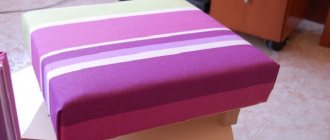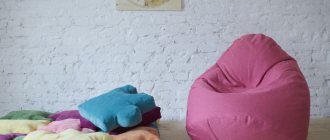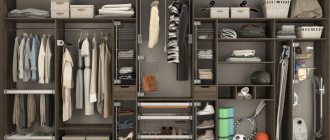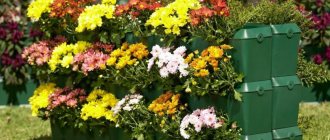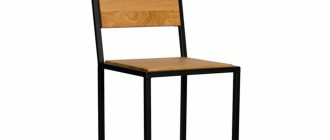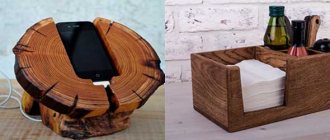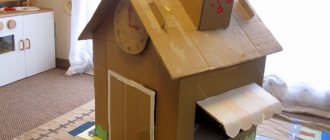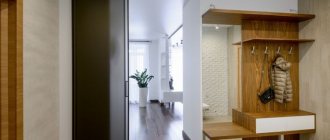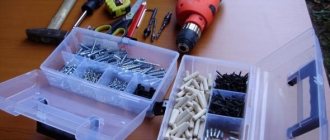Building an enclosure with your own hands is a responsible, time-consuming task. You first need to decide on the dimensions of the building, its location in the cardinal directions, in the back or front yard itself.
Directly, how to make an enclosure for a dog with your own hands, when the structure complements the architecture and interior of the site. Which is also important for the Alaskan Malamute and the bulldog. Criteria for habits, size, and adaptability to weather conditions are required: the height of the pen, the volume of the walking area, whether or not there is a booth inside.
The main criterion is size. The interior space is larger, it is more spacious, the paddock is comfortable and cozy.
The behavior and well-being of pets in a 6-meter pen for 1 individual will be much better. ALABAI, MASTIFFS, large dogs require increased room size. When enclosures are considered a structure where the owner is trying to “lock up” for the night, before his arrival, a 6x6 square enclosure is suitable, but not less than 8x8 m.
Where to place it correctly
The correct place is considered to be the one that is typical of the recommendations:
- Preference is a flat, dry area, no drafts or gusts of wind.
- The animal has a maximum view of 120° in both directions.
- The location is not close to the entrance and fence.
- Complete isolation from the owner is eliminated and loneliness is not experienced.
- Away from the windows of the house. So that the smells do not reach the hut.
Mistakes to Avoid
After building an enclosure, various problems may arise. It is easier to avoid mistakes if you know about possible difficulties in advance. Recommendations from those who have already built enclosures:
- forged decorative elements are beautiful, but can injure the dog. If possible, it is better to abandon them;
- The location of the enclosure should be chosen based on the view that opens. The more territory the dog sees, the more interesting it will be for him;
- When installing a door, it is important that it opens inward. Otherwise the dog will be able to knock it out. It is also necessary to install a lock or deadbolt;
- When using wooden boards, it is advisable not to nail them, because over time they will become loose and come out, which is dangerous for the dog.
The doors to the enclosure are installed last.
Selecting a location
The enclosure creates coziness, comfort, and convenience. To do this, an area on a hill is fenced off so that all cardinal directions are visible. A prerequisite is full visibility of the entrance to a residential building, the entrance gate. This tracking factor for the dog is extremely important; the zones of the tracking points are tracked.
A garden plot with beds and buildings, where the owner spends 80% of his time, is suitable; Irish, English and Scottish setters see it perfectly and watch from time to time. Communication is done with all family members so that the pet does not get bored, whine, or feel anxious.
Other conditions are unbearable for the animal; constant melancholy will cause whining and howling. It is impossible to limit the Shar Pei breed from the world of everyday life, observation, caresses and liberties, usual activities and attention with the owners.
Photo gallery of drawings
Large winter road designed for harsh weather conditions
Sketch with marked areas for walking, sleeping and eating the animal
Project of an enclosure for a large dog
Materials and conditions
The materials are selected to be strong and reliable so that the German Shepherd’s fangs do not chew off the parts of the enclosure fencing. The climatic zones in which the building is being built are taken into account in the calculations, and only then is attention paid to wishes and tastes.
The shed is built solely for entertainment, to house pets for a certain time. There is no booth inside. There are 2 zones - eating, spending time. The walking area is equipped with beds, making it comfortable for relaxation.
Construction of housing for small dogs
The main rule to avoid miscalculations: measure a hundred times, cut once. From here, sketches and tips will give a correct and competent idea of the pet’s future home.
Construction requirements
- Dimensions are chosen no more than 6-8 m2. In a high and deep enclosure, the dog will become scared, uncomfortable and uncomfortable.
- The roof is partially covered or not done.
- The height of the walls is no higher than 1500 mm. There is no need to transfer money to the height of the room.
- A maximum of 2-3 walls are covered with solid material, 1-2 are open. The dog feels safe in such housing.
- The floors are covered with wood, poured with concrete with a panel covering. A small dog can easily catch a cold due to drafts, this must be taken into account.
- The loungers are made in the form of a children's mattress with a cross section of 12–15 cm.
The optimal dimensions of an enclosure for a dog with your own hands are inexpensive, according to the experience of dog handlers: 2×3; 3x3, 4x6 m. When constructing, it is useful to start working on drawings, mini projects, standard series, and, of course, recommendations from expert professionals.
Buildings for medium purebred dogs
Medium-sized pets spend more time in the yard - during daylight hours, or on a warm starry night. When owners have no conditions and find it troublesome to keep pets at home, they prefer to set up a house building in the yard. English toy terriers prefer to build cozy buildings.
The presence of a booth or house within the height of the walls inside the pen is carried out according to the Standards and standard design. 3 zones are formed: for sleeping, feeding, and active walking. The dimensions of the house are standard and optimal: 65 cm high, 80 cm wide. In a cozy shelter, the snow-white Swiss Shepherd will feel much more spacious and at ease.
How is a home made?
Typical design of a pen for medium breeds of dogs: side length 3x2; 4x4; 6x4 m.
- Area 6-10 m2 (smaller is worse, the dog is cramped inside, the larger the feeling of aggression and unsafe behavior).
- The floors are made of wood on joists, concrete insulation is insulated with planks. Suitable in winter.
- 3 walls are made open, 1 edge is sewn up.
- There is a blank wall facing the North, maximally protecting the Doberman from slush, wind, rain and bad weather.
- The height of the walls is 2-2.5 m, so that the golden RETRIVERAN and BORDER COLLIE will not be able to jump over it.
Adequate dimensions: 3×3; 2x4 m. There are up to 100 options for enclosure drawings on the RuNet.
Location
Task No. 1 when choosing the location of the future enclosure is to ensure maximum visibility of the territory under the dog’s control. And task No. 2 is to remove this structure from possible sources of strong odors . There are “scents” that you don’t have to be afraid of - this is amber from a poultry house or from a barnyard, the dog can easily sniff them. But the constant ammonia smell will quickly weaken the capabilities of his nose. There are also fragrances that are completely harmful to a dog’s health, and you should stay as far away from them as possible.
When installing the enclosure, there is no need to navigate by the cardinal points or the direction of the winds. But if a pen is being built for a northern dog (husky, samoyed, husky, etc.), then it would be more correct (if there is such a technical possibility) to turn it with its façade to the north. An animal from the south (Caucasian Shepherd or Central Asian, for example), will be more comfortable living “facing” its native latitudes, that is, to the south.
Important! If there are blank walls near the enclosure, it is better when they stand against the movement of the prevailing winds in the area.
Enclosures for large purebred pets
MASTIF, Bernese SENNENHUND, which are difficult and impossible to keep in an apartment, are placed in dwellings built in the yard, pens of beautiful appearance and design. They need space; when there are two Labradors, it is worth thinking about choosing a place and building that is suitable in size.
Big friend needs a bigger pen. The area selected is at least 10 m2, the height of the partitions is from 2.5-3 m. Construction and sanitary standards are selected according to a reference book, standard projects, and tips from dog handlers.
The basis can be enclosures and the principle of constructing pens for medium-sized dogs: the same 3 open walls, 1 closed part.
A cute AUSSIY, just like a human, cares about warmth, coziness, and comfort. Floors can be successfully made on a cement base to make them stronger with the installation of insulation; the top is covered with wooden blocks or dense flooring. The enclosure must be covered, the dog will withstand any bad weather during the winter and will not experience discomfort.
The best dimensions for an enclosure are 3x4; 4x4, 6x6 m. The drawing is selected according to the standard series, taking into account the zoning of the region, the structure of the dog, and age.
Base
There is no need to lay a permanent foundation for a dog enclosure. This is expensive and pointless, since the dog doesn’t care much about the fact that the floor underneath him is blown. And dogs are insensitive to ground movements. Most often, ready-made enclosures are installed on bricks or concrete blocks, or even lowered directly to the ground. But if the dog is large and strong, the supporting pillars of the structure are better to be buried and concreted.
Making a booth
The Boston Terrier and French Bulldog will be in comfort when the enclosure is supplemented with a good-quality booth. The first rule is the parameters, they are significant and are chosen according to the physique of the LEONBERGER or Rottweiler. The Caucasian Shepherd will not go inside until it becomes comfortable and spacious for sleeping, resting, staying until sunset, the heat subsides, and coolness sets in.
Based on this, they draw a sketch, detail the drawings, and calculate the materials:
- The pet is measured at the withers with the tips of the paws.
- The second parameter, from the nose to the tailbone, will give the size in the lying position.
- Tolerances are made + 15 cm.
3 sizes will create an ideal neat outline: Siberian Husky and Samoyed.
How to care
In order for the enclosure to last for a long time, and for the dog to feel comfortable and healthy in it, it is necessary to monitor the cleanliness and order of the home. The enclosure itself and the surrounding area should be cleaned at least twice a week. Be sure to get rid of seeds and leftover food. Once a month it is recommended to carry out wet cleaning followed by disinfection inside the arena. In winter, procedures are carried out once every three months.
Important! You can let your dog into your home only after the surfaces have dried.
It is important for a large dog not only to have a personal space where he can rest peacefully, but also to have unhindered access to fresh air at any time. The enclosure not only represents the dog’s private territory, but also helps to protect the integrity of the surrounding area.
Construction of a booth house
Materials required for the booth:
- Wooden pine edged board 200x30 mm.
- Insulation (shavings, sawdust) 0.5 m3.
- Self-tapping screws 3x70, nails 100x3, 90x3 mm.
- Bar 70x40 mm.
- Tools – hacksaw, hammer, drill, SCREWDRIVERS.
- Wood varnish.
Making a kennel
The bars are knocked together into a frame, fastening is done with nails. Self-tapping screws secure the corners of the frame. For strength, corners made of metal and wood are installed. The box is made according to the dimensions of the withers - the tips of the paws, from the nose to the tailbone (+15 cm).
A hole is cut out on one of the walls. The dimensions of the height, width of the manhole and kennel are selected according to the pet (+ 5 cm to the height, width). All joints and edges of wooden structures are sanded with sandpaper.
Construction of an aviary
Pegs, corners of the building, guidelines for installing racks, and laying the foundation are placed according to size and location in the selected area. Before construction the following is taken into account:
- Pedigree.
- Age.
- Gender.
- Sides of the world.
- Wind roses.
The optimal enclosure for a dog with your own hands, drawings and dimensions in a standard series, where the parameters are selected based on the height at the withers to the area of the pen (cm/m2): 50/6, 50-55/8, over 65/10. Holes 1.0 x 0.3 m deep are dug along the perimeter of the canopy (4 in the corners, 1-2 on each wall). Racks made of metal pipe Ø 108x3.5, 3.0 m long, are concreted into drilled, dug holes. Concrete grade B20, W 150, F 35.
Before installing the pillars, they are primed at the bottom and treated with bitumen mastic. To make it easier to attach the crossbars to the pipes, eyes made from a 50x50x3 plate are welded. In each eye, 3-4 Ø 4 holes are made for self-tapping screws. Welded joints are cleaned of slag, primed, and painted.
At the bottom of the strip foundation markings along the racks, reinforcement is mounted into the frame and formwork. Reinforcement Ø 6-10 A1 is tied with annealed wire. After installing the reinforcing frame and formwork, the floor is filled with B50 concrete at a height of 40-50 mm above the reinforcement metal (protective layer of concrete).
72 hours after the concrete has reached 70% strength, the formwork is removed and the outer part of the foundation is covered with bitumen mastic. Logs and 70x50 bars around the perimeter are laid on the foundations. The base on which wooden floors are laid, insulation is placed, and the floors are covered with boards or boards.
After the flooring, they begin to construct a rear solid wall from edged boards 200x30 mm. Crossbars are placed along the perimeter of the enclosure in 3 dimensions (bottom, top, middle). A 2D mesh with 4-6 mm wire is attached to the crossbars. Fastening is carried out carefully, using ties and bolts, without sharp ends of metal or wire.
Using rods, not mesh, which is more expensive, will last 10-15 years longer.
Upon completion of work on the walls and floors, a roof deck frame is constructed, purlins and cross members are installed, and sheathing is made. A metal tile flooring and stamped corrugated sheets 10-80 are laid on the frame. Galvanized sheets are coated with polymer paint and enamel. To protect from rain and snow, a 0.5 m high cornice is sewn over the top with a board.
To prevent rotting and mold, boards, wooden frames and timber are treated with fire retardants.
Special cases
Husky
This intelligent, loyal and disciplined dog is becoming increasingly popular. If reindeer-hunting huskies do not make watchmen, and hunting dogs are produced occasionally (although all of them are outstanding), then the husky can be called a jack-of-all-trades dog. However, a husky enclosure should have a number of features.
First, the enclosure for a husky needs a height of 2.2 m. The husky dog is a very jumping dog; in their homeland they need it so much to look around over the endless snow. A husky jumps almost like a poodle, and he, for your information, jumps from the floor onto the cabinet without a run.
Secondly, the bars of the husky enclosure should be made not from rods, but from mesh. Jumping, the husky clings to it. If the bars of the husky's enclosure are made of twigs, then it will be impossible for the dog to do the physical exercises it needs. Finally, in mid-latitudes and to the south, it is better to have a husky enclosure facing north, northeast and northwest.
About the grid
Dog enclosures with mesh bars
A mesh lattice instead of rods is also suitable in an enclosure for dogs of other breeds. It is better to place a wicker mesh grille in the enclosure, pos. 1 in Fig. on right. For a husky, this is all the more good because the wires of the woven mesh are bent in a zigzag and are easier to cling to. But welded mesh will also work, pos. 2. In both cases, the wire diameter is from 4 mm, and the mesh is 10x10 cm for large dogs and from 5x5 to 7x7 for small ones.
It is not advisable to use chain-link mesh to lattice enclosures: even very calm dogs often injure their paws on it, and hair plucked by chain-link is a common occurrence in such enclosures. By the way, chain-link is safe for a husky, this dog is so smart. She is too smart for a chain-link enclosure: she unravels the joints, tears them off the frames and leaves the enclosure in an hour and a half. The only time an enclosure for a dog made of chain-link mesh is justified is when its area is more than 20 square meters. m, and the dog is a guard breed, i.e. very disciplined, and trained by a good dog handler.
For small and small
A puppy and a small but adult dog are far from the same thing, and they need different enclosures. First, there is no need to make an enclosure for puppies out of wood (item 1 in the figure below): they are still weak, but they will chew. The wood chips will be swallowed and get stuck in the ragged hole. Secondly, an enclosure for puppies needs to be made, taking into account that they have an insatiable curiosity, but their little minds have not yet developed. Scientifically, the full range of dog instincts has not yet been activated.
Enclosures for puppies and small dogs
Instead of an enclosure, suckling and stupid puppies should be kept in a playpen with soft walls so that there is no whining; a baby puppy feels abandoned if he cannot get used to something warm and soft. This is why puppies are often friends with house cats. A playpen for a puppy can be made from a cardboard box; For a couple more options, see the video at the end of the section.
When the puppy in the playpen begins to stand up, leaning his front paws on the side (pos. 2 in the figure), the soft upholstery needs to be removed and the puppy must be accustomed to the apartment cage made of mesh, pos. 3; It’s better to simply bend it from a piece of mesh with a mesh size of 3x3 to 5x5 cm, soldering the joint. A knitted joint is dangerous for a puppy.
Enclosures in an apartment for small dogs are generally arranged in the same way as for large ones, taking into account the low strength and insignificant love of freedom of the inhabitants. An enclosure for a decorative dog is the same set of beds made of vertical rods. Ready-made sections of mini-kennels for dogs are sold in pet stores; from them a dwelling of the desired size and configuration is assembled. But remember: for an indoor dog, an enclosure is something like a public garden with a bench or a bar. For permanent housing, a dog needs a house in an apartment.
Note: for lap dogs and other long-haired dogs, only welded sections of the apartment enclosure should be used. Braided dogs will pull out all the fur, especially since decorative breeds of dogs, as a rule, are no different in intelligence.
Video: puppy pen
Video: do-it-yourself playpen for puppies
For the pack
Aviary for several dogs
If the area is guarded by several dogs, a common enclosure for them should be made of sections with half-winter roads, canopies 3/4 of the length of the section, blank partitions between them and separate feeding troughs. Otherwise, bickering in your free time from work is guaranteed. In this case, 3-4 square meters will be enough for a large dog. m of area and sections as wide as the length of her body without a tail, see fig. on right.

